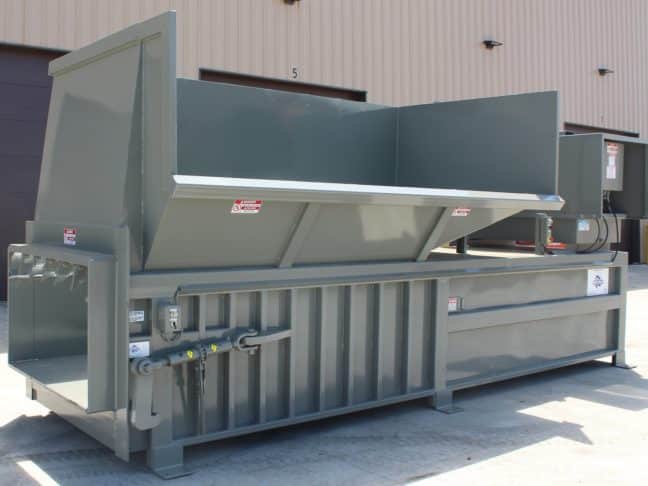Commercial & Industrial Compactor Cleaning Tips
May 2, 2022
Commercial and industrial trash and recycling compactors get dirty. Trash and material waste debris often get stuck in the machine’s many orifices, which can lead to costly breakdowns and expensive repairs if not addressed. It is imperative to commit to regular compactor cleaning and maintenance. Hopefully, the various cleaning tips and maintenance recommendations described within this blog will assist in improving the overall functionality of your compactor.
Commercial & Industrial Compactor Types
Compactors are available in several sizes, styles, and formats. Depending on the model and the types of material compacting, some are easier to clean than others. Regardless, all kinds of trash and recycling compactors eventually get dirty and need to be cleaned. Some of the different types of commercial and industrial compactors on the market include:
Compactor Cleaning & Maintenance Tips
Industrial and commercial trash compactors can handle bigger bulks of trash and manage all of it efficiently. Doing so can reduce the mass of the garbage you load it with, hence, lightening the load for easy transport, despite containing all the necessary waste. The following describes some essential steps for maintaining an industrial compactor.
Regularly Provide Inside & Outside Compactor Cleaning
Compactors can become filthy rather quickly. To stifle the adverse effects that large amounts of waste can have on the components of a compactor, it is essential that regular cleaning and maintenance is applied. Providing regular cleaning and maintenance can prolong the life of all types of commercial and industrial compactors. Some of the essential elements that should be cleaned include:
- Compaction chamber
- Compaction plate
- Door
Check Fluid Levels
Hydraulic fluid, oil, and other necessary fluids are the lifeblood of any compactor. If these fluids are low or run dry bad things can happen. To protect the integrity of the hydraulic system and other components, fluid levels should always be checked and maintained according to manufacturer recommendations.
Inspect Components
A worn or broken component can put your compactor unexpectedly out of service, throwing a wrench in your businesses’ essential processes. Instead of waiting and hoping that a part does not break, become proactive and inspect your compactor’s components before it’s too late. Some of the most critical compactor parts that should be regularly checked include:
- Hydraulics
- Pumps
- Oil filters
- Motors
- Switches
- Cylinders
Examine Hydraulic System
An industrial compactor’s hydraulic system is the backbone of the entire system. Without hydraulics, there is no compaction, which would make the whole point of trash consolidation moot. Commercial and industrial compactors consistently must adjust to changing pressures and temperatures, which can wreak havoc on the components of the hydraulic system. Check the compactor’s hydraulic system regularly to prevent costly breakdowns.
Keep the Surrounding Areas Free of Debris
Like any product or industry, the less dirt and debris surrounding a particular machine, the less negative consequences are likely to occur. Sweep and pick up larger trash pieces that cover your industrial compactor, and fewer problems are likely to occur.
EMP is Your Trusted Resource for Quality Commercial & Industrial Compactors
In the market for a reliable, high-quality industrial compactor? Look no further than EMP for your industrial and commercial trash compactor needs. Our established partners are at the forefront of the compactor industry. Whether you are looking for a new or used industrial compactor or have one to sell, EMP has you covered. Contact us with any questions, and we’ll be happy to assist.